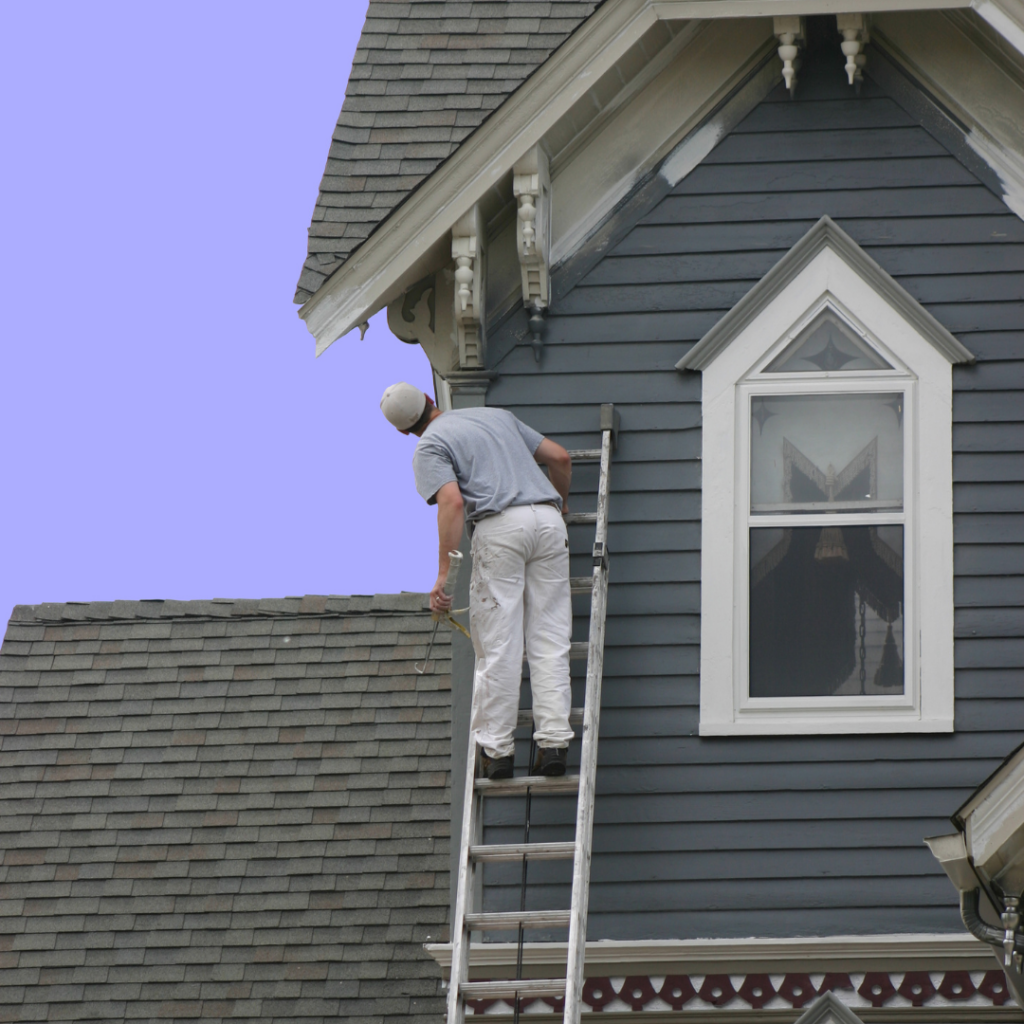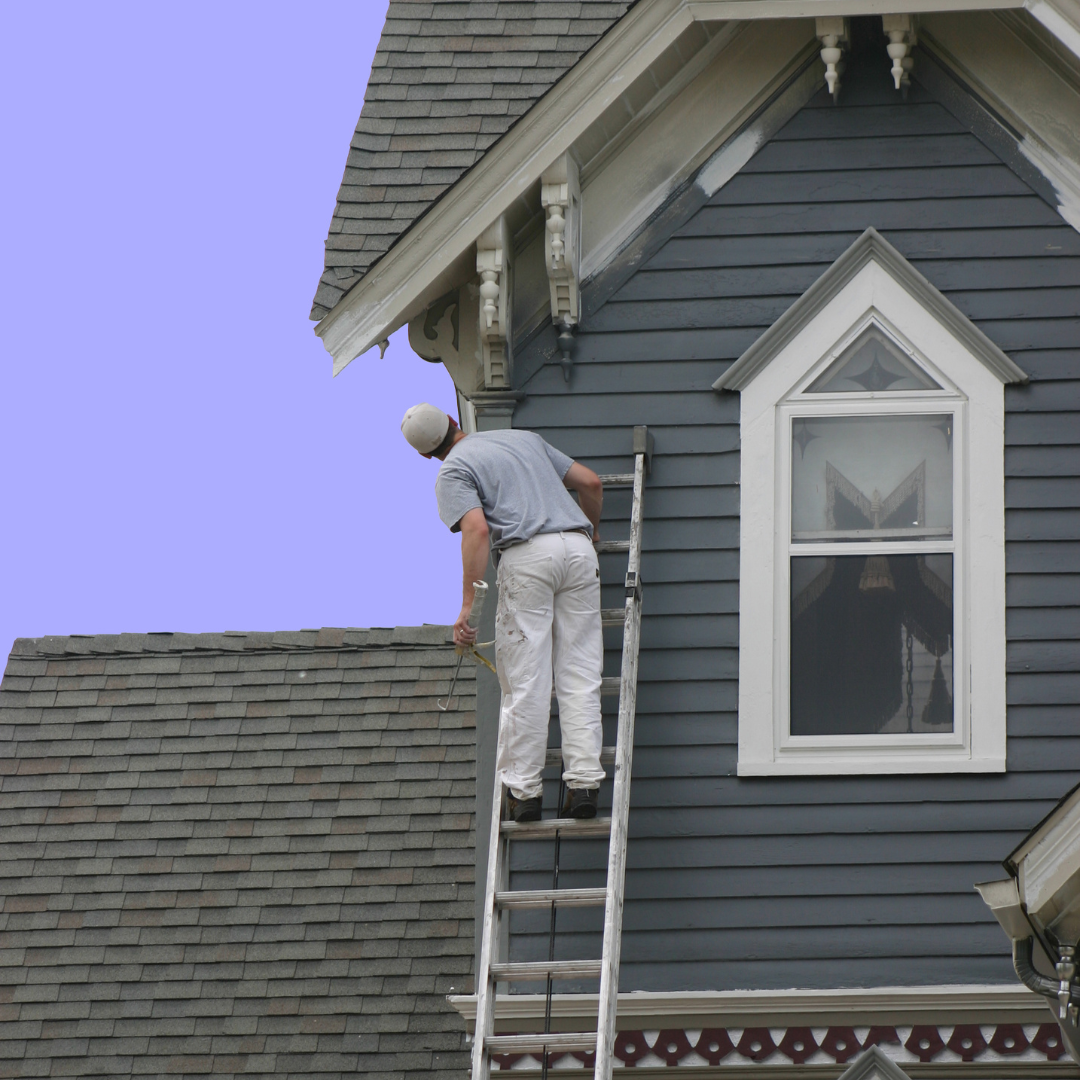How to prepare your home’s exterior: The exterior of your home likely takes quite a beating over the fall and winter months. Indeed, harsh weather and seasonal changes can affect your home’s outside surfaces. Industry reports show that properly prepping and repainting your home’s exterior every 3-5 years on average can add over $15,000 to its value!
So, as the spring season peaks and temperatures start warming, now is the optimal time to show some love to the exterior of your house with a fresh coat of paint. Besides, it would help if you were adequately prepared for exceptional paint adhesion and longevity in future seasons.
But how do you prepare to paint your home’s exterior with stunning results? Read on as we explore all the necessary steps to achieve this.
Why Is Spring the Best Season for Exterior Painting?
Spring provides ideal weather conditions for exterior house painting in many regions. As temperatures warm up and humidity levels remain low, paint dries faster than during the heat of summer or cold of winter. Less bugs and leaves floating around means less mess on walls, doors, and windows.
So, as spring rolls around, assess the condition of your home’s exterior paint to determine if you’re up for a DIY project or will hire professional painters this season. When a fresh coat of quality exterior paint is applied correctly and allowed to cure, it will protect your home from harsh elements for years before needing touch-ups.
How To Evaluate Your Home’s Current Exterior Paint Condition
To achieve a seamless painting process, you must know how to evaluate your home’s current exterior painted surfaces. To do this, try walking around your home during daylight hours. Check for these common issues to identify necessary repairs and replacements:

How to prepare your home’s exterior: Checking for Rotting Wood or Peeling Paint
Press firmly on all wooden window frames, railings, shingles, siding, and trim with a flathead screwdriver to find soft spots. Pay special attention to areas prone to moisture exposure, like porch posts and steps. If your screwdriver tip goes in with little resistance, you will have rotten wood that needs replacement.
Also, examine these wood exterior components for bubbling or peeling paint. Use your scraper tool to check if the paint is firmly adhered to or lifts quickly in sheets. Scrape off loose paint down to the bare wood surface. Make a list of all sections needing wood repairs, replacements, or paint scraping for proper surface preparation.
Identifying Areas Prone to Mold or Mildew
Check exterior walls for areas with recurring black mold or greenish mildew growth. Diagnose if persistent moisture from lousy drainage, leaky fixtures, or other sources feeds mold colonies. Determine if adjusting drainage, sealing leaks, removing overgrown vegetation, installing ventilation, or other measures will remedy the underlying moisture issue before painting.
Equipment You’ll Need for Exterior Painting Preparation
Another aspect of your preparation is to ensure you have some specialized equipment. Invest in quality tools for tasks that will last across home improvement projects. Examples of such include:
How to prepare your home’s exterior:Choose the Right Type of Paint Scraper
To remove cracked and peeling exterior paint, you need a paint scraper with a rigid blade resistant to bending. Opt for a carbide blade scraper with widths from 2″ to 6″ to suit curved or flat surfaces. The angled shape and sharpened edge make short work of paint removal tasks.
Invest in a Sturdy Stepladder
Regular folding ladders lean against siding at an angle. This leads to slipping hazards and difficulty maneuvering around to access all areas. Telescoping multi-position ladders are safer and bend into various shapes needed for overhead exterior painting projects. Consider your tallest exterior point and buy accordingly for a non-slip option with padded steps.
Shop for Drop Cloths and Painters Tape
Prep your outdoor painting space by protecting against mess with canvas drop cloths and painter’s tape.
Drop Cloths Protect Surfaces from Drips and Spills
Heavy-duty canvas drop cloths safeguard patio furniture, fixtures, vehicles, and plants from accidental paint splatters. Some come with nylon backing or magnet weights to prevent blowing away in the wind. Buy sufficient drop cloth supplies to cover vulnerable landscapes thoroughly.
How to prepare your home’s exterior: Use Painters Tape for Sharp Paint Lines
Apply high-tack painter tape in straight lines wherever siding, shingles, and trim pieces meet at corners or layered surfaces. Removing the tape after painting leaves you with a crisp, professional paint line. Save painter’s tape for the last step since sun exposure reduces adhesive quality if left for many days.
8 Steps to Prep Your Home’s Exterior Surface
From cleaning to priming, tackling these steps ensures your home’s exterior surfaces are ready for fresh paint. Allow 1-3 days minimum to complete the entire prep process. Follow provider instructions for all product applications and drying times.
How to prepare your home’s exterior: Clean the Surface Area Thoroughly
Before scraping or sanding, wash exterior walls, eaves, woodwork, and concrete using a pressure washer set to under 1500 psi. This removes built-up dust, spider nests, pollution, and other debris so the underlying paint finish shows through. Let all washed areas fully dry for 24-48 hours.
Scrape Off all Loose Paint
Next, utilize your sharp paint scraper to remove all cracked or peeling paint to the bare surface underneath. Wearing safety goggles and gloves, hold the scraper at a 45° angle, applying firm pressure to avoid digging into exterior building materials.
Sand Exterior Wood Surfaces
Break out the power sander for previously painted wood needing extensive paint removal or bare wood repairs. Using 60-80 grit sandpaper discs, smooth out uneven textures so new paint bonds evenly during application. Dust off surfaces when wood sanding finishes.
How to prepare your home’s exterior: Use Caulking to Fill Gaps and Cracks
Inspect all joints around windows, doors, pipes, wires, fixtures, siding seams, corners, and trim for visible cracks or gaps letting in drafts. Use painter’s caulk to fill openings bigger than 1/8 generously”. Let dry thoroughly per manufacturer guidelines before adding paint.
Wash and Mask Windows and Doors
Clean exterior doors, frames, handles, and glass windows with soap and water. Dry thoroughly before applying painter’s tape around the perimeter to protect hardware, hinges, and window seals from paint mess.
Cover Plants, Lawns, and Surrounding Areas
Keep plants healthy throughout the painting by securely covering them with drop cloths, tarps, or plastic sheeting. Weigh down, covering edges with bricks or other heavy objects. Check for and seal off any vents close to the painting area to prevent fumes from entering your home. Consider what furniture items to remove or protect with offsite storage during work.
Patch Unpainted Stucco, Wood, and Masonry
Scan exterior walls for unpainted surfaces needing repair, including stucco cracks, exposed wood knots, minor wood rot spots, damaged brick mortar, or chipped concrete sections. Use patching compound products specifically made for each building material following label instructions to fill holes and blend surrounding texture.
How to prepare your home’s exterior: Apply Exterior Primer to Unpainted Areas
Using a paint roller or brush, spread exterior primer over any replacement wood sections, patched holes, bare concrete, previously unpainted stucco, or brick. The primer helps new paint better adhere to the various surfaces. Applying two thin primer coats for incredibly porous masonry allows complete sealing and proper curing between applications.
Now Hire a Painting Pro or DIY with Confidence!
With your exterior painting prep list complete, it’s time to proceed! Determine whether your painting skills and schedule allow for a do-it-yourself project or if hiring an experienced professional painter is the best option this spring.
Protecting Belongings by Working with Painting Pros
Hiring a licensed and insured painting contractor with many years of experience working on local homes has advantages. They supply all the painting equipment, materials, protective gear, and the skills and labor to get areas unreachable with an extension ladder safely painted. Providing your paint color samples ensures the scheme you envision comes to life on every surface. Discuss an estimated timeline for completing work efficiently so belongings get tucked away just long enough.
#1 Interior & Exterior Painting Solution
Before winter creeps in again, dull home features, get ready to paint your exterior this spring for protection from the elements and eye-catching style. Your local Link Solutions Painting Company team has the commercial painting expertise to ensure lasting quality for businesses across Massachusetts. For superior interior and exterior painting solutions relied upon by Boston MetroWest companies, call our top-rated painters today at 339-230-7993. Google us!


